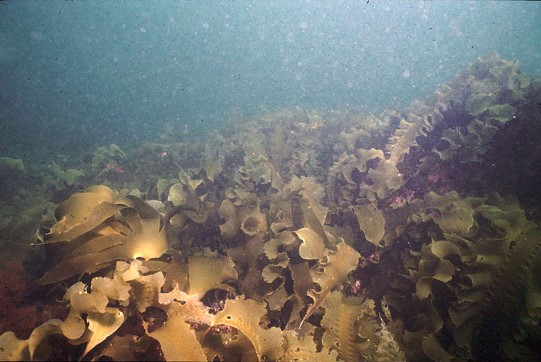- Details
- Written by Patrick R. McElhiney
- Category: Articles
Rochester, NH: Cornerstone VNA will be hosting a 4-week Holiday Grief Support Group for adults, in a safe and caring environment. The goal of the group is to help individuals cope with feelings of grief, loss, and sadness, which can be especially challenging during the holiday season. The Holiday Grief Support Group will take place on Tuesdays, from 5:00 pm until 7:00 pm on November 26 and December 3, 10 and 17 at Cornerstone VNA on 178 Farmington Road in Rochester, NH. This is a drop-in group and registration is not required. For more information, contact Cornerstone VNA at 603-332-1133.
Cornerstone VNA is a nonprofit home, health and hospice agency currently serving Rockingham, Strafford, Belknap and Carroll Counties in New Hampshire and York County in Maine. The team at Cornerstone VNA provides skilled nursing, rehabilitative therapies, social work as well as volunteer and support services through five distinct programs: Home Care, Hospice Care, Palliative Care, Life Care-Private Duty, and Community Care. For 106 years, Cornerstone VNA has been committed to bringing services to people of all ages, so that families can stay together at home, even when facing the challenges of aging, surgical recovery, chronic or life-threatening illnesses or end of life care. To learn more about Cornerstone VNA, visit www.cornerstonevna.org or call 800-691-1133.
- Details
- Written by Patrick R. McElhiney
- Category: Articles
New Hampshire’s preliminary seasonally adjusted unemployment rate for October 2019 was 2.6 percent, an increase of 0.1 percentage point from the September rate, which remained at 2.5 percent after revision. The October 2018 seasonally adjusted rate was 2.4 percent.
Seasonally adjusted estimates for October 2019 placed the number of employed residents at 754,600, an increase of 1,350 from the previous month and an increase of 9,320 from October 2018. The number of unemployed residents increased by 380 over-the-month to 19,940. This was 1,620 more unemployed than in October 2018. From September to October 2019, the total labor force increased by 1,730 to 774,540. This was an increase of 10,940 from October 2018.
The unadjusted October 2019 unemployment rate for New Hampshire was 2.3 percent, unchanged from the September rate, which remained at 2.3 percent after revision. The October 2018 unadjusted rate was 2.0 percent.
Nationally, the seasonally adjusted unemployment rate for October 2019 was 3.6 percent, an increase of 0.1 percentage point from the September rate, and a decrease of 0.2 percentage points from the October 2018 rate. The national unadjusted rate for October 2019 was 3.3 percent, unchanged from the September rate, and a decrease of 0.2 percentage points from the October 2018 rate.
NOTE: State nonfarm employment estimates are available on our Internet Web site: www.nhes.nh.gov/elmi concurrent with this release. Local area unemployment rates are expected to be available on Thursday, November 21. All monthly data will continue to be published in the monthly newsletter New Hampshire Economic Conditions.
- Details
- Written by Ginna Schonwald
- Category: Articles

“The library staff is really nice and they do amazing with what they have, but they really need more space,” Francesca says. “One time my friends and I went to the library to work on a project after school. The Lego Club was using the children’s room, so we couldn’t work there. A Mahjong Club was using the tables. The library was so crowded that we had to go into a back corner to find a place to work. It’s such a small space,” Francesca says. “It’s hard for it to accommodate so many people.”
Francesca and her family use the library a lot. She has participated in 4-H Science programs, summer craft programs, summer reading program, babysitting classes (where she got CPR certified), a Dungeons and Dragons Club, an Escape Room program, and more. Francesca has worked as a volunteer at the library, too, helping out with 3-5-year-old storytimes.
“I love volunteering to help with story hour – it’s great to see the little kids and help them with crafts. It feels really rewarding to see their faces,” Francesca says.
With two younger siblings, Francesca has lots of experience working with young kids. Her mom, Laurie Ferguson attended lap-sit story hour with all three children. “That’s where all my friendships in this town happened,” Laurie says. “It’s a place to connect with your community and find your peeps.”
The library has also been a place for both her and her family to broaden their horizons. “Francesca found out about the Dungeons and Dragons Club and she wanted to try it. Dave [a former library staffer] took the time to teach her all she needed to know to get started. The club welcomed her in. Opportunities like that let kids learn things that they might not ever have access to otherwise.” Laurie says.
During the summer, Francesca goes to the library 2-3 times a week and during the school year, she gets there as often as she can. “Sometimes if the school doesn’t have a book that I want to read, I’ll ask my mom to get it at the town library.” If the town library doesn’t have the book, they can get it for her on InterLibrary Loan, so that she doesn’t have to buy the book to read it. And Francesca reads a lot of books!
Both mom and daughter agree that the Barrington Public Library is about more than books though. It’s really all about connecting with others. “You can connect to people who have the same interests as you,” Laurie notes. “Now Francesca knows this whole other group of kids that she would probably have never known. It has expanded her social connections – made them more diverse.”
The current Barrington Public Library, at 3,740 square feet is about 1/3 the recommended size for our town’s population. “Right now, they don’t have space for new books, which means that every time they get one they have to get rid of one,” Laurie says. With more than 560 programs and 46,000 visits per year, there is simply not enough room for the current demand. Francesca is looking forward to the library having a space for teens. ”When we have group projects, we often have to get together outside of school to work on them. The library is a great place to meet because it’s a central gathering point for us and we can find (the) information we need for our projects.” But, Francesca notes, sometimes the computers are all in use and the children’s room is in use. With the new library, there will be room for everyone.
“When we lost power and didn’t have the internet, my mom could go there to get her work done. It’s a great place to get work done, to hang out and read, and to work on projects,” Francesca notes.
“It all centers around (the) community. It’s really a community space.”
More about the Proposed Barrington Public Library and Community Center
The proposed new Barrington Public Library and Community Center will be about 3 ½ times the size of the current space with 13,120 square feet. It will include a community room with space for up to 100 people in addition to a craft room, a quiet study room, and a conference room for 10-12 adults. The project is expected to serve the needs of the town for at least 50 years to come. Nearly half a million dollars in donations and pledges have been received to help cover the cost of the new building. In March of 2020, voters will be asked to approve a $4.7 million bond for 15 years to cover the projected costs of the new facility. This cost equals approximately $36 per 100,000 of assessed value for Barrington property owners.
- Details
- Written by Patrick R. McElhiney
- Category: Articles
 DURHAM, N.H. – The effects of climate change are becoming more apparent, from the rapidly warming Gulf of Maine, to more frequent and severe storms and the increase of invasive turf seaweed. Researchers at the University of New Hampshire have found that these environmental developments are contributing to the transformation of the seafloor to a lower, more patchy seascape dominated by shrub-like seaweed which could impact species habitats and the structure of the food web.
DURHAM, N.H. – The effects of climate change are becoming more apparent, from the rapidly warming Gulf of Maine, to more frequent and severe storms and the increase of invasive turf seaweed. Researchers at the University of New Hampshire have found that these environmental developments are contributing to the transformation of the seafloor to a lower, more patchy seascape dominated by shrub-like seaweed which could impact species habitats and the structure of the food web.
“These shifts in nature have created a perfect breeding ground for much bushier, or turf, seaweed to take root,” says Jennifer Dijkstra, research assistant professor in UNH’s Center for Coastal and Ocean Mapping. “Our earlier research showed a clear increase in invasive seaweed in areas once dominated by tall blades of kelp, that are important in the protection of sea life, but this new research showed us just how widespread this shift is and the effects the turf seaweed could potentially have on the ecosystem.”
 In their research, recently published in the Journal Ecosphere, the researchers used high-resolution underwater video of the seafloor taken by moving back and forth in a “lawnmower” pattern. The footage of various seafloor habitats, collected from over 100 square miles, was transformed into photomosaics to generate a spatial seascape map. In the imaging they identified over 23 different types of seaweed, breaking it down to areas dominated by turf, kelp or mixed seaweed. Overall, the lower-lying turf seaweed made up a significantly larger amount of the seascape.
In their research, recently published in the Journal Ecosphere, the researchers used high-resolution underwater video of the seafloor taken by moving back and forth in a “lawnmower” pattern. The footage of various seafloor habitats, collected from over 100 square miles, was transformed into photomosaics to generate a spatial seascape map. In the imaging they identified over 23 different types of seaweed, breaking it down to areas dominated by turf, kelp or mixed seaweed. Overall, the lower-lying turf seaweed made up a significantly larger amount of the seascape.
“We also looked at temperature increase by decades and saw that the warmer water temperatures central to climate change are likely shortening the growing season of kelp, which prefers colder conditions, but the more dominant forms of turf seaweed can thrive in these temperatures,” said Dijkstra. “So, turf that is already more easily dislodged by storms can become loose, reproduce and travel to take advantage of open space year-round in the Gulf of Maine.”
 The researchers also examined the relationship between seascape patterns and patchiness and its relation to the abundance of fish in each habitat. Results showed that patch size had a direct correlation to the abundance of fish in habitat types and that more turf seaweed areas may lead to fewer observed fish in these habitats, specifically the mid-trophic level species like cunner. A habitat dominated by lower, bushier turf could lead to fewer areas for fish to hide and increase the time and energy that species like cunner spend seeking and defending their shelter, or may even cause them to occupy less sheltered areas in which the risk of predation is greater.
The researchers also examined the relationship between seascape patterns and patchiness and its relation to the abundance of fish in each habitat. Results showed that patch size had a direct correlation to the abundance of fish in habitat types and that more turf seaweed areas may lead to fewer observed fish in these habitats, specifically the mid-trophic level species like cunner. A habitat dominated by lower, bushier turf could lead to fewer areas for fish to hide and increase the time and energy that species like cunner spend seeking and defending their shelter, or may even cause them to occupy less sheltered areas in which the risk of predation is greater.
 Researchers say the trend for increasing temperatures combined with more frequent and intense storms and fluctuations of available resources could create better conditions for the turf seaweed to prosper and grow and therefore increase the overall seascape patchiness. Their research indicates that these changes could propagate up the food web, specifically affecting those species that are residential and seek refuge and food within these habitats.
Researchers say the trend for increasing temperatures combined with more frequent and intense storms and fluctuations of available resources could create better conditions for the turf seaweed to prosper and grow and therefore increase the overall seascape patchiness. Their research indicates that these changes could propagate up the food web, specifically affecting those species that are residential and seek refuge and food within these habitats.
 Co-authors on this study, all from UNH, are Yuri Rzhanov, research professor of ocean engineering; Brandon S. O’Brien, Ph.D. student; Kristen Mello ‘14, project research specialist; and Amber Litterer ‘16, Center for Coastal and Ocean Mapping.
Co-authors on this study, all from UNH, are Yuri Rzhanov, research professor of ocean engineering; Brandon S. O’Brien, Ph.D. student; Kristen Mello ‘14, project research specialist; and Amber Litterer ‘16, Center for Coastal and Ocean Mapping.
This project was supported by a grant from NOAA (NA15NOS4200) and a UNH Research Engagement award.
The University of New Hampshire inspires innovation and transforms lives in our state, nation, and world. More than 16,000 students from all 50 states and 71 countries engage with an award-winning faculty in top-ranked programs in business, engineering, law, health, and human services, liberal arts and the sciences across more than 200 programs of study. As one of the nation’s highest-performing research universities, UNH partners with NASA, NOAA, NSF and NIH, and receives more than $110 million in competitive external funding every year to further explore and define the frontiers of land, sea, and space.
Page 58 of 77


